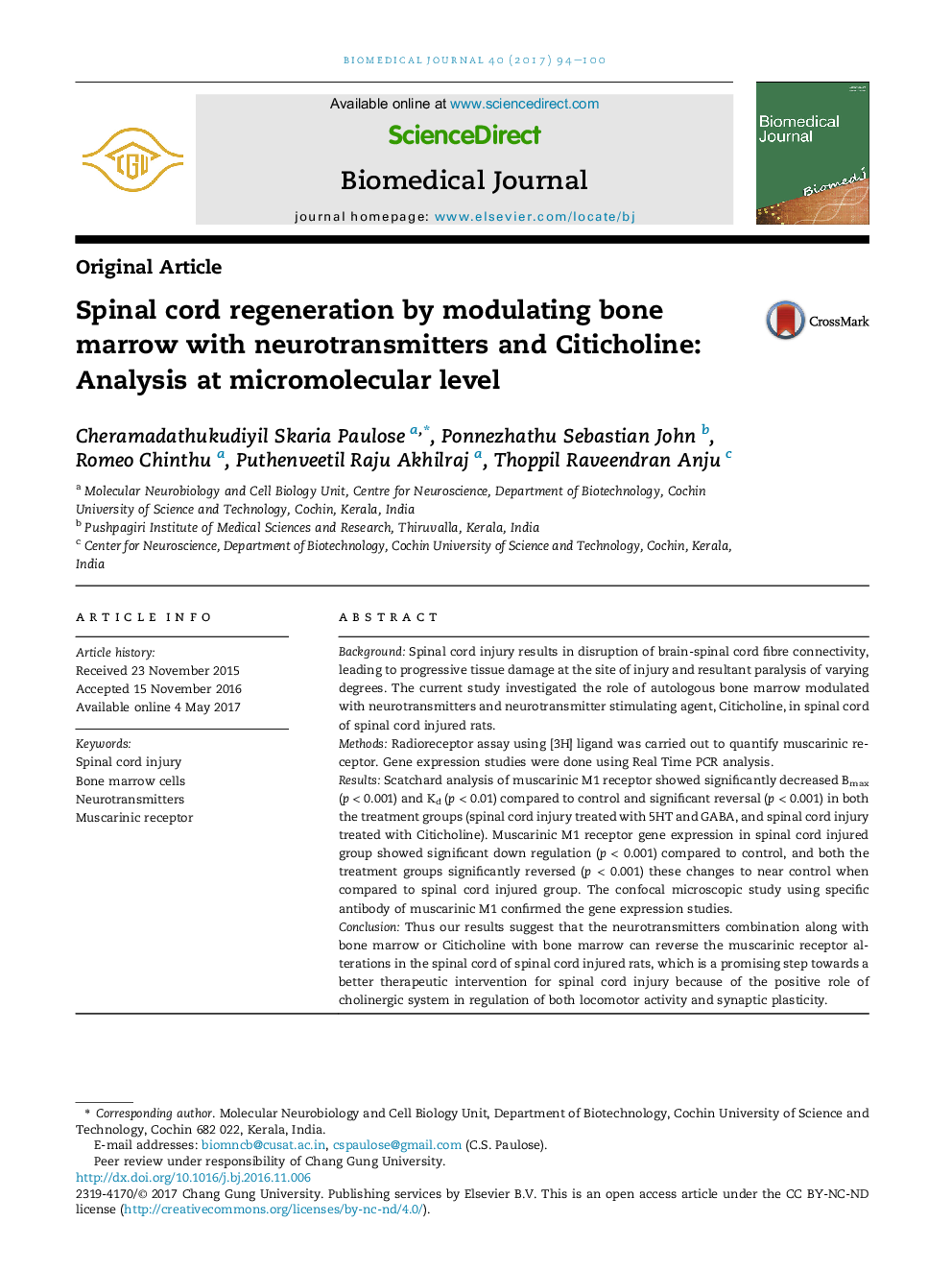| Article ID | Journal | Published Year | Pages | File Type |
|---|---|---|---|---|
| 5524597 | Biomedical Journal | 2017 | 7 Pages |
BackgroundSpinal cord injury results in disruption of brain-spinal cord fibre connectivity, leading to progressive tissue damage at the site of injury and resultant paralysis of varying degrees. The current study investigated the role of autologous bone marrow modulated with neurotransmitters and neurotransmitter stimulating agent, Citicholine, in spinal cord of spinal cord injured rats.MethodsRadioreceptor assay using [3H] ligand was carried out to quantify muscarinic receptor. Gene expression studies were done using Real Time PCR analysis.ResultsScatchard analysis of muscarinic M1 receptor showed significantly decreased Bmax (p < 0.001) and Kd (p < 0.01) compared to control and significant reversal (p < 0.001) in both the treatment groups (spinal cord injury treated with 5HT and GABA, and spinal cord injury treated with Citicholine). Muscarinic M1 receptor gene expression in spinal cord injured group showed significant down regulation (p < 0.001) compared to control, and both the treatment groups significantly reversed (p < 0.001) these changes to near control when compared to spinal cord injured group. The confocal microscopic study using specific antibody of muscarinic M1 confirmed the gene expression studies.ConclusionThus our results suggest that the neurotransmitters combination along with bone marrow or Citicholine with bone marrow can reverse the muscarinic receptor alterations in the spinal cord of spinal cord injured rats, which is a promising step towards a better therapeutic intervention for spinal cord injury because of the positive role of cholinergic system in regulation of both locomotor activity and synaptic plasticity.
